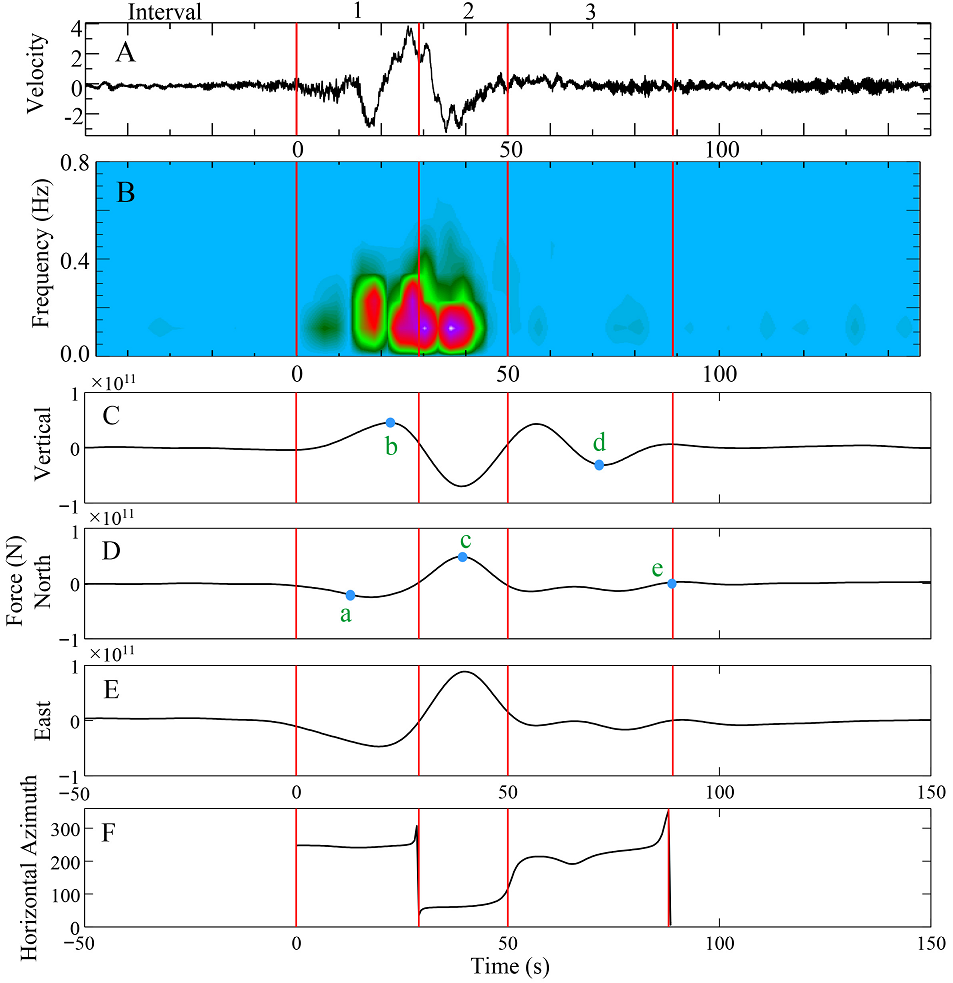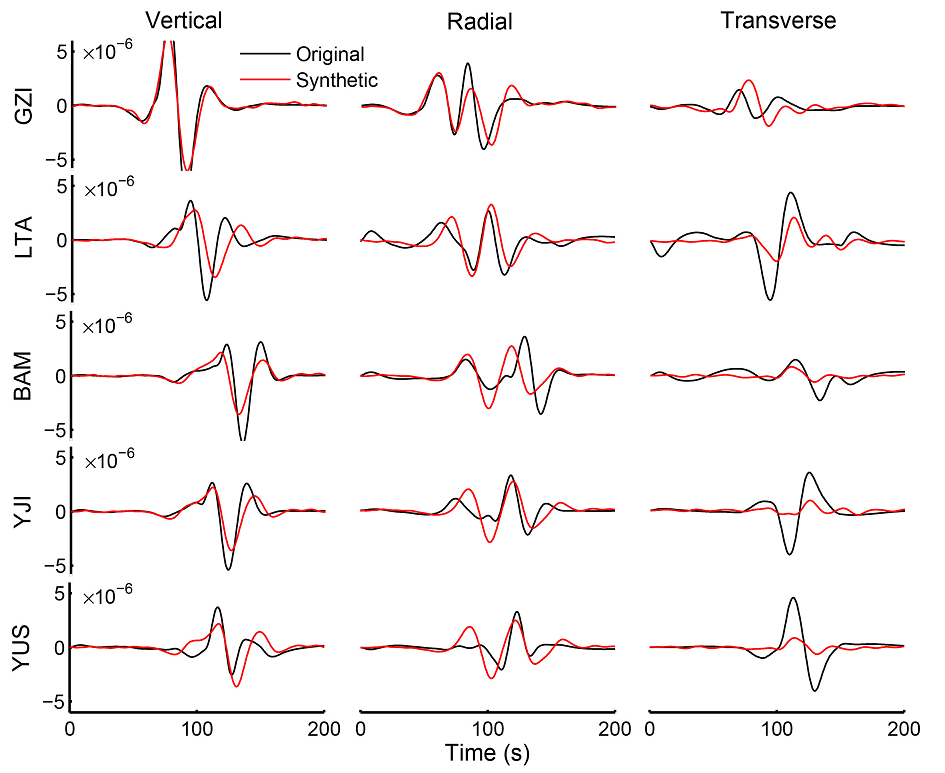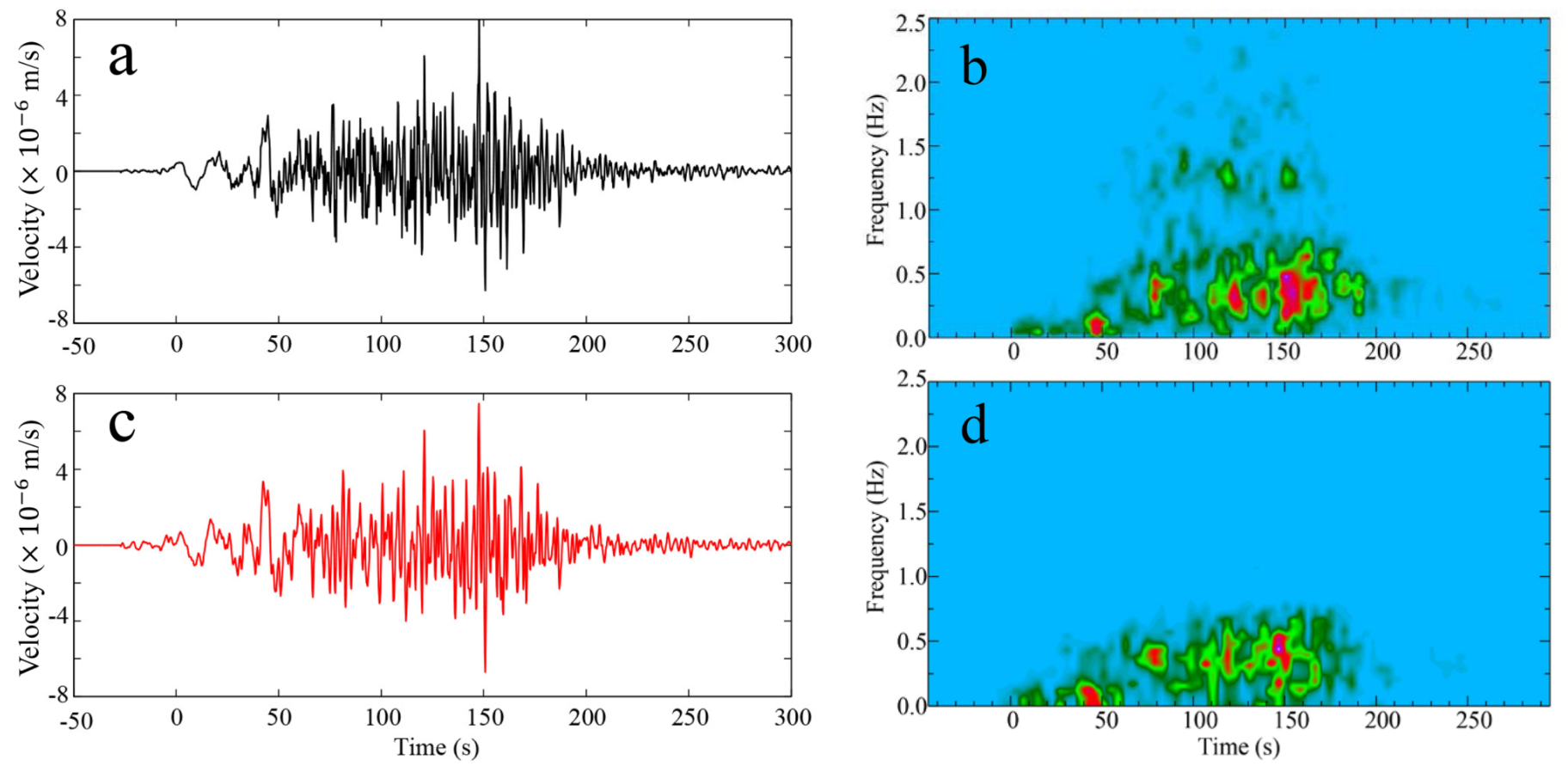Landslides are spectacular and dangerous natural disasters that are often hard to predict. For the same reason, it is difficult to estimate the dynamic properties of the landslide by direct time-dependent observations. However, estimating the location, duration, occurrence of events in very remote areas that may have remained undetected by existing methods is of great significance for emergency rescue. Because the seismograms can provide a time series recording of landslide sliding during run-out, seismology is a potential tool to improve our understanding of landslide dynamics, such as center-of-mass acceleration, friction coefficient, and sliding displacement of sliding materials.
According to the seismic signals generated by the Jinsha River Baige landslide, the team of Prof. HE Siming inverted the force-time function using the damped least squares. Waveform data for this study air provided by Data Management Centre of China National Seismic Network at Institute of Geophysics, China Earthquake Administration. When combined with the field investigation, the spectrogram, and the force-time function, landslide properties such as the friction coefficient, center of mass speed over time, and trajectory could be estimated. These landslide dynamics are essential for a successful numerical landslide modeling. This study entitled Source characteristics and dynamics of the October 2018 Baige landslide revealed by broadband seismograms has been published online in Landslides.
In addition, the team of Prof. HE Siming used seismic signals generated by a smaller landslide that occurred within two minutes of the end of the 2010 Mount Meager landslide as the empirical Green’s function (EGF) with which to obtain landslide dynamics from high-frequency signals. We then obtained the apparent force-time function of the landslide based on the EGF by inverting the higher-frequency seismic signals. The seismic data used in this study were provided by the Pacific Northwest Seismic Network, and the Canadian National Seismograph Network. This study entitled Analysis of broadband seismic recordings of landslide using empirical Green's function has been published online in Geophysical Research Letters.


Figure 1. Inverted three-component force-time function. Recorded displacement seismograms (black lines) and synthetic seismograms (red lines) (Image by HE Siming).

Figure 2. Inverted three-component force-time function using the Green's function (blue lines) and the empirical Green’s function (red lines). The zero on the time scale represents the beginning of the main landslide (Image by HE Siming).

Figure 3. (a, b) Seismogram and spectrogram of the vertical component of the signal generated by the main landslide as recorded at station WSLR. (c, d) Synthetic seismogram and spectrogram of the vertical component of the signal as recorded at station WSL R (Image by HE Siming).
Contact:
Prof. HE Siming
Institute of Mountain Hazards and Environment, Chinese Academy of Sciences
Chengdu, Sichuan, 610041, China
Tel: 86-13688084541
E-mail: hsm@imde.ac.cn
